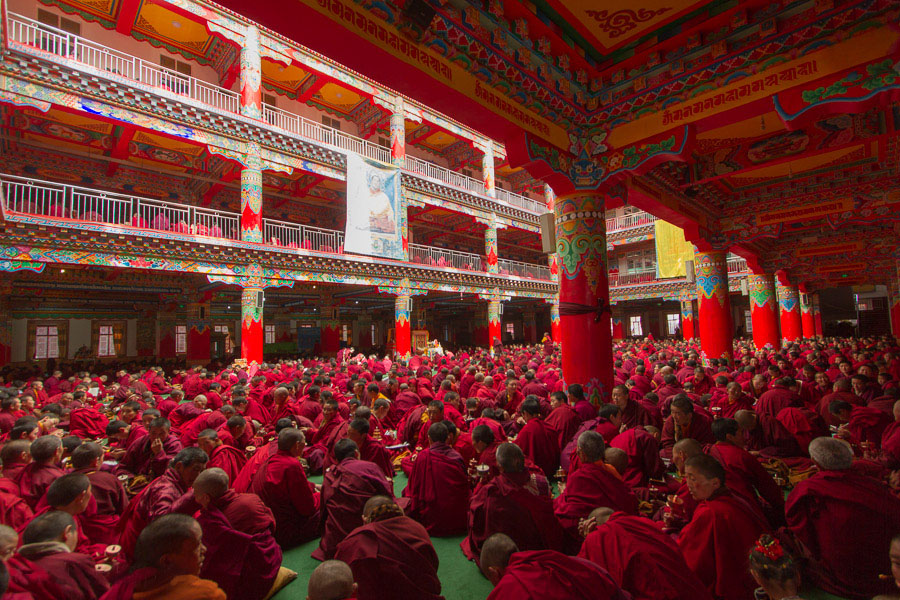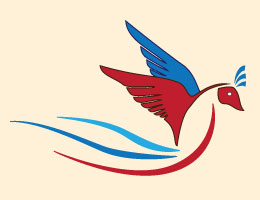Tibetan Buddhism
Longchen Nyingthig
Andreas Walsh

 Jigme Phuntsok
Jigme Phuntsok
Jigme Phuntsok
- (Tibetan: འཇིགས་མེད་ཕུན་ཚོགས, Wylie: 'jigs med phun tshogs; 1933-2004) was one of the key figures in the history of 20th Buddhism in Tibet, playing an extremely instrumental role in the revival of the Dharma after the harsh religious persecutions of the Cultural Revolution.Jigme Phuntsok was born in 1933 into a family of nomads from Golok Serthar (色达县) - an ethnic Tibetan region in Sichuan Province, China. In 1938, at the age of five, he was identified as the reincarnation of the Terton Sogyal, Lerab Lingpa (1852–1926), guru to the 13th Dalai Lama, and became a monk at Nubzur Gonpa, a branch of the Palyul monastery in Serthar. The Palyul Monastery, founded in 1665 in the Kham area of eastern Tibet (present day Baiyu, Sichuan), is one of the six great "mother monasteries" of the Nyingma School, or Ancient Translation Lineage.
After undergoing the intense training and education required of a high incarnation, he received full monastic ordination and was enthroned as the abbot (khenpo) of Nubzur just as China's new Communist government began tightening its grip on Tibet.
As 1959 approached, with the radicalization of Communist Party policies it was clear that an anti-religious persecution was coming in China. In Tibet the Buddhist hierarchy was divided into those who decided to head for the border and cross into India, and those who resolved to stay in Tibet and weather the storm. In the hard years that followed, many of those who refused to leave their country were murdered or died in prison or labor camp.
During this period Jigme Phutsok chose to remain with his people, but managed to outlive Mao's destructive and fanatical social experiments by returning to the high steppes where he was born and assuming the role of the family he had been born into - that of being a simple nomad. As the Cultural Revolution raged through the country, he quietly herded sheep and goats through the remote mountains and valleys of Sichuan. In this way Khenpo Jigphun was able to continue his Buddhist practice in his homeland and maintain contact with a core of students even in the darkest times, often teaching in caves at night.
Contents
 Serthar, Jigme Phutshok's Homeland
Serthar, Jigme Phutshok's Homeland
Buddhist Revival
For almost twenty years Khenpo Jigme lived his underground nomad life, quietly herding animals across the steppes, always somehow eluding the Tibetan Red Guards and the Chinese Army. Then, in 1976, Mao Zedong died. Although hard-core Maoist cadres would retain their grip on some remote areas for another decade, in large parts of Tibet the religious situation began to improve immediately. As soon as this became clear, Khenpo Jigphun put on his monastic robes again and resumed teaching and writing openly.
In 1978 he founded the Larung Gar WuMing (Five Science) Buddhist Institute in an entirely uninhabited valley in his native region of Serthar (Sèdá Xiàn).
In 1987 Khenpo led several thousand of his disciples on a pilgrimage to Wutaishan - the sacred Buddhist Mountain Center in Shanxi Province. On the way, in Beijing, he met the Panchen Lama who had been released from prison not long before. At the end of 1988, at the request of the Panchen Lama, Khenpo gave a series of teachings at the Tibetan Buddhist Institute in the Chinese capital, Beijing.
Soon after, Khenpo was invited to India to teach at the Nyingma schools. While in India he also visited Dharamsala, where he and the Dalai Lama resumed the guru-disciple connections they had had in their previous lives. The Dalai Lama received Nyingma and Dzogchen teaching from Khenpo. Once while they were walking together the entire Fire Puja section of the practice of Vajrakilaya appeared in the sky above Dharamsala. Khenpo dictated the verses to the Dalai Lama, who personally transcribed them.
In the 1990s, he began an appeal to traditional Tibetan yak herders to refrain from commercial sale of their livestock for spiritual and cultural reasons. This has grown into the Anti-Slaughter Movement.
In 1993, Khenpo made a teaching tour of Buddhist Centers in Europe and North America. What he saw saddened him. While on the U.S. West Coast, Khenpo is reported to have even broken down in tears in middle of his sermon, disturbed by the materialism and spiritual shallowness of Buddhist teachings in the West.
Meanwhile, thousands of students from all over Tibet, Mongolia, China, and even overseas, were flocking to study at Larung Gar - so much so that the Government panicked. Nor were they pleased with Khenpo's new friendship with the Dalai Lama. In August 2001, the Public Security Bureau and People’s Liberation Army marched into Larung Gar with bulldozers and demolished over 2000 cottages, evicting thousands of members, including all Han disciples. But that barely slowed the wave of youth eager to study with a living legend, and today Sertha Lharong is the largest religious college in the world.Very soon after this incident Khenpo's health began to deteriorate. After benefiting beings and the Dharma through his manifold enlightened activities, on January 7, 2004, having reached the age of 70, Khenpo Jigme Phuntsok passed into parinirvana at the 363rd Military Hospital in Chengdu, the capital of Sichuan Province.

